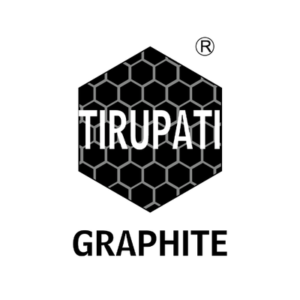Graphene, a single layer of carbon atoms arranged in a honeycomb lattice, is renowned for its exceptional properties. This material is a superb conductor of electrical and thermal energy, incredibly lightweight, chemically inert, and flexible, with a large surface area. Additionally, graphene is eco-friendly and sustainable, opening up numerous possibilities for diverse applications.
In battery technology, conventional and prospective battery electrode materials see significant improvements when enhanced with graphene. A graphene battery can be light, durable, and suitable for high-capacity energy storage while also shortening charging times. It extends the battery’s life by adding conductivity without the extensive use of carbon typically required in conventional batteries.
Graphene can enhance battery attributes such as energy density and form in various ways. By introducing graphene to the anode of lithium-ion batteries and other rechargeable batteries, it leverages graphene’s conductivity and large surface area for optimal performance. Hybrid materials have also shown promise in battery enhancement. For instance, combining Vanadium Oxide (VO2) with graphene can improve lithium-ion cathodes, enabling quick charge and discharge cycles and enhancing charge cycle durability. While VO2 offers high energy capacity but poor electrical conductivity, graphene serves as a structural backbone, creating a hybrid material with both heightened capacity and excellent conductivity.
Lithium Iron Phosphate (LFP) batteries, a type of rechargeable lithium-ion battery, also benefit from graphene enhancement. Although LFP batteries have lower energy density compared to other lithium-ion batteries, they boast higher power density. Enhancing LFP cathodes with graphene results in lightweight batteries that charge faster and have greater capacity than conventional LFP batteries.
Beyond transforming the battery market, the combined use of graphene batteries and supercapacitors holds immense potential, such as improving the range and efficiency of electric cars. While graphene batteries are not yet widely commercialised, ongoing breakthroughs in battery technology are reported worldwide.
Batteries function as a mobile power source, allowing electricity-operated devices to work without direct connection to an outlet. Despite the variety of battery types, their basic operation remains similar: one or more electrochemical cells convert stored chemical energy into electrical energy. A typical battery consists of a metal or plastic casing, a positive terminal (anode), a negative terminal (cathode), and electrolytes that facilitate ion movement between them. A separator prevents electrical short circuits while allowing the transport of ionic charge carriers, and a collector conducts the charge outside the battery to the connected device.
Electricity production in a battery involves a series of reactions. The anode undergoes an oxidation reaction, producing a compound and releasing electrons. Simultaneously, the cathode experiences a reduction reaction, where ions and free electrons combine into compounds. The anode reaction produces electrons, while the cathode absorbs them, generating electricity. This process continues until the electrodes deplete the necessary substances for the reactions.
Batteries are categorised into two main types: primary and secondary. Primary batteries are single-use, becoming useless once their electrode materials irreversibly change during use. Common examples include zinc-carbon and alkaline batteries, used in toys, flashlights, and portable devices. Secondary batteries, such as lead-acid and lithium-ion batteries, can be recharged multiple times, as their electrode compositions can regain functionality.
Different types of batteries offer varied advantages and disadvantages. Nickel-Cadmium (NiCd) batteries, though low in energy density, are used for long life, high discharge rate, and economic price, commonly found in video cameras and power tools. However, they contain toxic metals and are environmentally unfriendly. Nickel-Metal Hydride batteries, with higher energy density but shorter cycle-life than NiCd batteries, are used in mobile phones and laptops. Lead-Acid batteries, heavy but economically priced, are essential for large power applications, such as hospital equipment and emergency lighting.
Lithium-Ion (Li-ion) batteries are preferred for their high energy and minimal weight, despite requiring a protection circuit for safety. They are used in cell phones and computers. Lithium Ion Polymer (Li-ion polymer) batteries, lighter and slimmer than Li-ion batteries, are common in mobile phones. They are safer and have longer lifespans, though Li-ion batteries are cheaper to manufacture and have higher energy density.
While certain batteries store substantial energy but are large and heavy, capacitors charge and discharge quickly but hold less energy. Graphene’s role in this area introduces exciting possibilities for energy storage, offering high charge and discharge rates and economic affordability. Graphene-enhanced performance blurs the line between supercapacitors and batteries.
Graphene-based batteries are on the horizon. Although not yet fully commercialised, intensive research and development are underway, with companies like Samsung and Huawei developing graphene-enhanced batteries. Some batteries utilise graphene peripherally; for example, in 2016, Huawei introduced a graphene-enhanced lithium-ion battery that operates at higher temperatures and offers double the operation time due to improved heat dissipation. Graphene reduces the battery’s operating temperature, enhancing its overall performance.
Tirupati Graphite PLC (LON:TGR) is a fully integrated specialist graphite and graphene producer, with operations in Madagascar and India. The Company is delivering on this strategy by being fully integrated from mine to graphene. Its global multi-location operations include primary mining and processing in Madagascar, hi-tech graphite processing in India to produce specialty graphite, and a state-of-art graphene and technology R&D center to be established in India.


